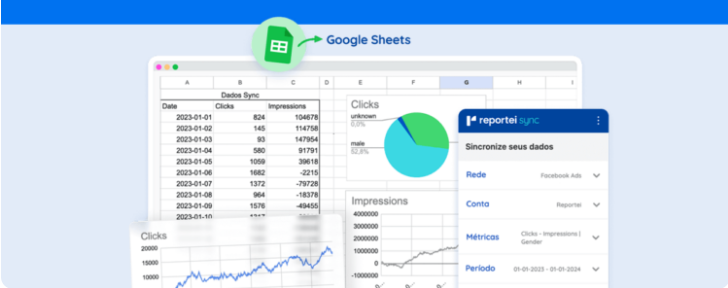Learn about the benefits of having a Social Media portfolio and check out our tips for putting one together
Whether you’re a freelancer, a professional looking to work with social media management, or part of an agency, a Social Media portfolio is essential for drawing clients and job opportunities.
By compiling projects into a portfolio, you can showcase your experience with different networks and segments and show off the quality of content you’ve created. Sometimes, a portfolio also displays the fruits of your work on posts, blog articles, and other content.
In other words, the more objective the information you’ve included, the easier it will be for potential clients to assess what you can contribute to their businesses.
Don’t worry if you haven’t put together a good portfolio yet. We’ve compiled the handiest tips to help you. Check out our article below!
How to build a Social Media portfolio
Before you start building a Social Media portfolio, think about your experience so far. Consider what you would like to use to spark the interest of potential clients or to draw job agency job opportunities.
Because working with Social Media involves several aspects, such as planning strategies (Social Media Manager), producing and designing content, and ad placement.
The more in-depth you can show the work you deliver, the easier it will be to reach the right clients and show them how you can help.
The first step is to set a goal for your Social Media portfolio to dictate an order to present your work (which we’ll get into with four tips below).
Get personal
First, let’s get one thing straight. A portfolio is not a resume. It’s not a detailed description of your career. Instead, it should show your previous work for social media.
Including a personal introduction presenting who you are, what you do, your skill set, and contact info is crucial.
You don’t need to get into too much detail. Just cover the essentials so potential clients know who it is they’re hiring and not only what you can do for them. If your portfolio was on a website, this part would be the “about” page.
Select your previous work
After defining a goal, it’s time to think about the work you’ve done that you’d like to highlight with a portfolio. Remember when we mentioned all the different aspects of working with Social Media before?
Now it’s time to go over what you’ve produced. You can sort your projects by format, clients, niches or in chronological order. Select the best pieces of art, articles, social media posts with high engagement, or paid media campaigns.
When it comes to visual pieces like arts and texts, that’s even more simple. However, if you are a specialist, bet on the case study format, which gathers info on your activity and direct results.
Choose the best way to promote your portfolio
Once you’ve selected your projects, it’s time to start promoting them. What’s the best way to do that?
Since we’re talking about services for Social Media, it’s best to have a digital portfolio. Many professionals apply for a job by compiling links and other information and sending it in an email or PDF file.
But that’s not the only way to do it. Freelancers might bet on a portfolio management platform like Behance (which is more focused on design) or on building their own website without a high investment.
Many tools might help, and you don’t have to be a professional website creator to use them.
Update your projects regularly
And now for our last golden tip! Don’t forget to update your Social Media portfolio with new projects and results for clients or the agency you work for.
That’s key to showcasing your continued experience and evolution working with Social Media. As a result, you’re more likely to develop your career, get hired for jobs, and collect more content for your portfolio.
Let our reports in Reportei help you build your Social Media portfolio
As we said earlier, one of the most important steps in creating a Social Media portfolio is going beyond showing pieces you’ve designed or written. It’s crucial to highlight the results of your work.
For example, let’s say you produce content for social networks. What is the reach and engagement like on the profiles you create it for? How have those channels developed over time through your contributions?
That kind of information is essential to building cases of success and the trust of potential clients you might be negotiating with.
One of the most practical ways to closely monitor your digital marketing strategy results and gather relevant metrics is using our reports in Reportei!
Reportei’s integration with a wide range of social networks, ad platforms, and other relevant channels makes it easy to capture data in seconds. You can select a period and effectively generate reports, which buys you time for an in-depth analysis of results and for planning the next steps of your projects.
Create dashboards for practicality, real-time tracking, and recording of your activity and results with the Marketing Timeline tool.
There’s no time to lose! Start using Reportei today to show relevant data to your clients and enrich your Social Media portfolio!



